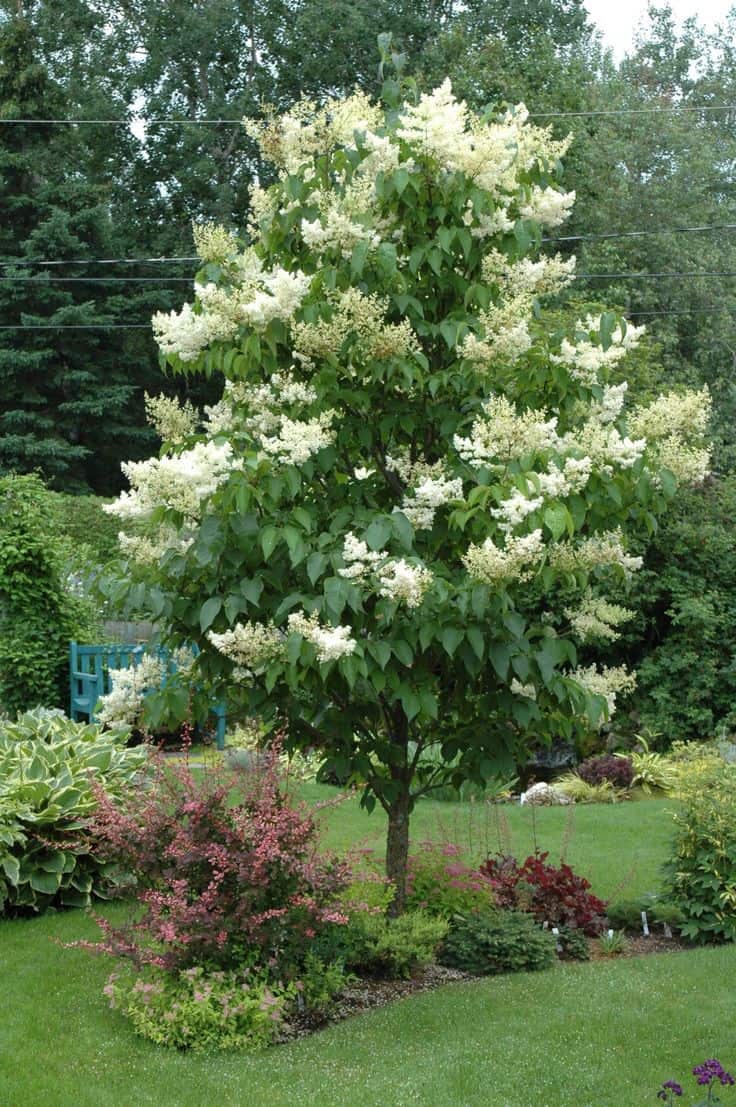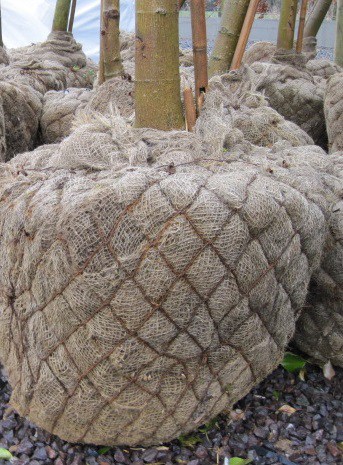No products in the cart.

Planting a large tree can transform your landscape instantly, offering visual impact and long-term value. With the right timing and preparation, establishing a specimen tree is straightforward and highly rewarding.
Best Time to Buy and Plant Specimen Trees
The ideal planting season for large trees is between November and March, when trees are dormant. This is also when bare-root and root-ball trees are available—both are cost-effective options, particularly for planting multiple specimens. These trees are sold by girth, which is the trunk circumference measured 1.5m above the root ball.
If immediate planting isn’t possible due to weather or site conditions, store the trees temporarily by covering their roots with good topsoil in a raised bed.
Tree Types: Choosing the Right Format
Nurseries typically offer trees in three formats:
1. Bare-root trees:

- Ideal for young trees (up to 3 years old).
- Available from November through early spring.
- Roots should be wrapped to prevent drying out.
- Soak roots in water for 2 hours before planting.
- Ensure roots are well-spread to encourage early growth.
2. Root-ball trees:

- Suitable for semi-mature and evergreen trees.
- Grown in open ground with pruned roots to encourage a fibrous root system.
- Wrapped in hessian and wire for transport.
- Should be planted during dormancy (autumn to early spring).
- If delayed, store like bare-root trees.
3. Containerized trees:

- Available year-round, but generally more expensive.
- Grown in pots with compost and may develop circling roots.
- Remove excess compost above the roots and prune away any roots growing from the trunk.
- Tease out and trim roots before planting to promote outward growth.
Site Preparation
Healthy soil is critical for successful establishment. Ensure the site is:
- Well-drained and not overly compacted.
- Rich in nutrients and organic matter.
- Free of weeds and debris before planting.
Prepare the site ahead of tree delivery to ensure immediate planting.
Planting Process: Step-by-Step
- Water thoroughly before planting. Bare-root trees benefit from root soaking.
- Remove packaging: Take trees out of pots and remove wire/burlap from trunks. Leave hessian around the root ball as it will biodegrade.
- Tease and inspect roots to assess spread and encourage side root development.
- Dig a wide hole: Same depth as the root ball and 3x as wide.
- Avoid compacted soil at the base. Do not dig too deep or the tree will sink.
- Set planting depth so that the first major roots sit just below the soil surface.
- Backfill with care, eliminating air pockets, and add slow-release fertilizer.
- Stake the tree: Use traditional tree stakes or an underground anchoring system for a clean finish on specimen trees.
Post-Planting Care: Ensuring Long-Term Success
Watering
Even in climates like Ireland, drought stress is common during establishment. Water regularly, especially during dry or windy conditions, for at least three years. A tree irrigation system offers consistent moisture with minimal effort.
Feeding
Apply a balanced fertilizer in late winter to support spring growth.
Weed Control
Keep a clear radius around the tree base to reduce competition for water and nutrients.
Mulching
Apply mulch in late winter after feeding. Keep mulch away from the trunk to prevent rot and pest issues.
Protection
Use tree guards to protect young trees from rabbits and deer, especially in rural areas.
Final Thoughts
Planting a specimen tree is a lasting investment in your landscape. With careful planning, proper technique, and regular aftercare, your tree will flourish for decades to come. Whether you’re planting a single feature tree or establishing a full avenue, the right approach ensures healthy, beautiful results.
